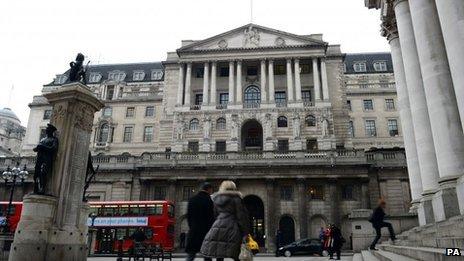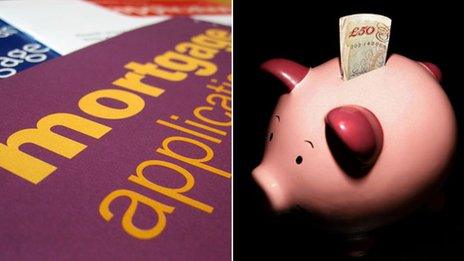Who has benefited from record low interest rates?
- Published

It is now five years since the Bank of England's Monetary Policy Committee cut its bank rate to a historic low of just 0.5%.
The key interest rate, which influences the cost of borrowing throughout the banking system and the wider economy, has stayed there ever since.
As a Bank official once explained to me, it has been an "extreme policy setting". It is still with us and has had a profound impact on the UK.
However things are certainly not back to normal.
So what has the impact been?
Dr Ros Altman, an economic policy expert, says there is a very long list of people who have not benefited from this policy of ultra-low interest rates.
"Small businesses, who still are unable to borrow on decent terms, youngsters struggling to pay increased rents as house prices have kept being pushed up, older generations whose pensions and savings income has been hit," she says.
"All savers have lost out because the income they might have previously got on their savings has been cut dramatically [and] anyone buying an annuity has lost out significantly."
Who benefited from five years of record low interest rates, asks Dominic Laurie
Lost savings
Anyone with a bank or savings account will be familiar with the derisory rates on offer, sometimes as low as 0.1% for an ordinary cheque account.
The savage drop in savings rates is best illustrated by looking at what is on offer to people who want to put money away in the highly popular tax-free cash Isas (individual savings accounts).
According to the Bank of England's statistics, the average rate on a cash Isa back in 2007 was more than 5%. Now it is about 0.6%.
How much have savers "lost" because of this regime of what some economists call "financial repression"?
A recent study by the management consultants McKinsey puts the sum foregone by UK savers at £66bn between 2007 and 2012.
Anna Bowes, who runs the financial comparison website for savers called Savings Champion, says would-be savers are having to scratch around to make sure their savings even keep up with inflation.
"The very best instant access rates currently available are about 1.4% or 1.5% - it's really poor, though you can get 3.25% for locking your money away for five years.
"Unfortunately there isn't an alternative, but there is little incentive to save."

Low rates have had very different effects for borrowers and savers
Lucky mortgage holders
The most obvious beneficiaries of low interest rates have been people with mortgages - currently about 11.2 million people have one.
In mid-2008, the average interest rate for someone fixing their mortgage for two, three or five years - and with a 25% deposit - was about 6.4%.
Those rates have since slumped, and in January this year they stood, according to the Bank of England, at an average of 2.4% (for a two-year fix), 2.9% (for three years) and 3.3% (for a five-year deal).
Remarkably, in the past couple of years it has been possible to borrow at less than the prevailing rate of inflation.
Low mortgage rates have also helped keep thousands of people in their homes when they might otherwise have had their properties repossessed for falling into arrears on their repayments.
How much have mortgage holders saved in the past five years, compared to what their repayments would have been if the financial crisis had never happened and the bank rate had stayed at 5%?
Bob Pannell, chief economist at the Council of Mortgage Lenders (CML), estimates that it comes to roughly £100bn.
Staving off collapse
So what exactly was the point of cutting interest rates so swiftly, from 5.0% in April 2008 to just 0.5% less than a year later?
Along with the new-fangled policy of quantitative easing - printing massive amounts of electronic money - the aim was to stop the supply of money in the banking system and the wider economy drying up altogether.
This might have led to an even more devastating credit crunch where banks could not lend at all and borrowers could not borrow.
Kate Barker, a member of the MPC at the time, recalls the reasoning: "We had just had a quarter in which output in the economy had fallen by about 1.5%, we had a collapse in world trade.
"We knew that just cutting rates probably wasn't enough, and we introduced quantitative easing, really to try to help companies go round the banks and borrow money more directly on the bond markets."
The economy is now growing again but the bank rate is still at 0.5% and the Bank of England has now chucked nearly £375bn at the banking system via its policy of QE.
So has the policy worked?
Kate Barker says, emphatically, yes. "The truth is, the scale of the credit crunch was even larger than we appreciated at the time, and then on the back of that we had the very extreme difficulties in Europe," she says.
"We were trying to offset what we thought at the time was a very big risk of the economy moving into some appalling downward spiral. It did succeed in doing that and to that extent I'm really glad we did it and it was a success," she adds.
Anyone with savings, however, may not agree.